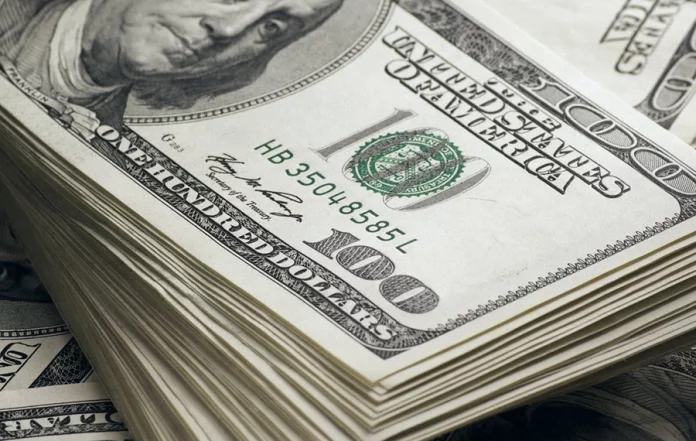The strong dollar poses challenges for US markets that may persist.
The value of the US dollar has risen sharply this year compared to currencies of many other countries including the British pound, the Japanese yen, and the euro. The dollar is at its highest level in 20 years against other major currencies while the pound is at its lowest level against the dollar since 1985, the yen is at its lowest point since 1998, and the euro is worth less than the dollar for the first time since 2002.”
A stronger dollar sounds like a good thing, like seeing results from all those hours you’ve spent in the gym. However, currency markets are not weightlifting and being strong is not without negative consequences if you’re the dollar. In fact, it may be possible that the dollar has now become too strong for its own good.
Why do currencies rise and fall?
To understand why the dollar’s strength may not be an unquestionably good thing, it helps to understand how currencies are valued. The amount of a country’s currency that can be bought with a specific amount of another country’s currency is always in flux. Even countries with close economic and geographic ties such as Canada and the US can see wide swings over time in how much a US dollar buys in Banff or what a Canadian dollar is worth in Key West. Those fluctuating currency values reflect how much the governments, companies, banks, and individual investors who buy and sell in global currency markets are willing to pay. Their views on the relative values of currencies mostly reflect where they believe they will get the best return on their investment.
Typically, if a country has relatively strong economic growth and low debt, its currency will be sought after in global markets which will cause its price to rise. On the other hand, countries whose growth is weak and debt is high may see less demand for their currencies and their value will lag those of countries with more robust economies.
Of course, growth alone doesn’t make a currency strong. Emerging-market countries such as Brazil or India may have good long-term growth prospects but their currencies are not so highly valued by global investors. That’s because their economies rely heavily on a few industries or commodity exports, which leaves them more susceptible to boom and bust cycles than countries with more diversified economies such as the US, Japan, or Germany.
Why is the dollar strong?
Many investors see the dollar as the safest asset to hold when stock and bond markets turn volatile as they have this year. That’s partly because the dollar has a unique status as the world’s “reserve currency.” This means central banks and financial institutions around the world hold lots of dollars to use for international transactions. They do this because using a single currency rather than having to convert between currencies helps enable international investing and lending.
The dollar has also gained strength because the US economy looks healthier than those of many other countries where growth is slower and debt and inflation higher than in the US. Europe in particular is struggling with high inflation and slowing growth due to energy supply disruptions resulting from the war in Ukraine and may already have entered a recession.
The dollar’s strength also reflects the markets’ views on the policies of various countries’ governments and central banks. The Federal Reserve is focused on slowing inflation and is raising interest rates higher and faster than are central banks elsewhere. Meanwhile, the UK, which is struggling with both high inflation and weak growth, has announced a package of tax cuts which has helped push the value of the pound against the dollar to its lowest point in decades.
Is a strong dollar bad?
The most obvious risk a strong dollar poses is the way it can hurt the US stocks that many people rely on as mainstays of their retirement accounts. The US-based companies that make up the S&P 500 earn nearly 40% of their revenues outside the US. As Fidelity Director of Global Macro Jurrien Timmer explains, “When the dollar rises against, say, the euro, as it has done in the last year, then a company’s euro-denominated sales are worth less once they’re exchanged into dollars.” That means a rising dollar is likely to have a noticeable impact on these companies’ revenues, earnings, and stock prices.
Besides hurting earnings, a super-strong dollar can also hurt prices of US stocks and bonds by making them more expensive for big non-US institutional investors. Faced with higher prices, they may opt to invest their money elsewhere, dragging US markets downward in the process.
Or is a strong dollar good?
While a strong dollar may hurt US stocks, it also makes international stocks a bargain for US investors who want to diversify their portfolios. Historically, international stocks have outperformed US stocks and they also have tended not to rise or fall in lockstep with US markets. Over time, diversifying with non-US stocks may reduce risk in an investor’s portfolio. The strong dollar may also help the stocks of non-US companies who operate in currencies such as the yen or euro but who export their products to the US.
However, Fidelity Director of Quantitative Market Strategy Denise Chisholm warns against making major changes to your investments based on fluctuations in foreign exchange rates. “The strength of the dollar hasn’t historically been much of a predictor of how stock sectors will perform. If you bought or sold sectors based on the typical historical outcomes when the dollar has appreciated by 10% or more in a year, which is the situation we’re in, you’d have made the wrong move for 7 of the 11 sectors,” she says.
A strong dollar makes imported goods cheaper for US consumers. That may help cushion some of the impact of high inflation in the US, but much of the food and energy whose price increases are hitting households the hardest are produced in the US rather than imported, and continuing supply chain tangles are still likely to influence the prices of foreign-made goods at least as much currency values are.
Cheaper imports also create other problems for the US by increasing the country’s trade deficit. The US already imports nearly $1 trillion more in goods and services than it exports each year, almost 5% of the country’s gross domestic product (GDP), at a time when total US debt is already well over 100% of GDP. Fidelity’s Asset Allocation Research Team says that high levels of public and private debt are likely to mean returns from stock and bond investments may be lower in the decades ahead than they have been historically.
How long will the dollar stay strong?
Fidelity Managing Director of Asset Allocation Research Lisa Emsbo-Mattingly expects the dollar to remain strong as long as the US economy continues to outperform other big economies and the Federal Reserve continues to raise interest rates. She says, “I’m skeptical that we’ll get a coordinated response to the strong dollar. The World Bank and International Monetary Fund annual meetings may be an opportunity to start pushing back on this dramatic rise in the dollar, but I think it’s going to be hard to stop.”
Kana Norimoto, fixed-income macro analyst at Fidelity, says that the Fed is more concerned with raising rates to fight inflation in the US than it is with how higher rates may affect the value of the dollar. She says policymakers are likely to focus on the dollar’s strength at the November G20 summit, a meeting of leaders of the world’s 20 largest economies, but she doesn’t expect the meeting to bring significant changes that would slow the dollar’s rise.
Perhaps the only clear winners if the dollar stays stronger for longer may be those fortunate enough to be planning trips abroad. Whether it’s an overnight in Niagara or a safari in Namibia, you’re nearly certain to get more for less.
— Fidelity

























































